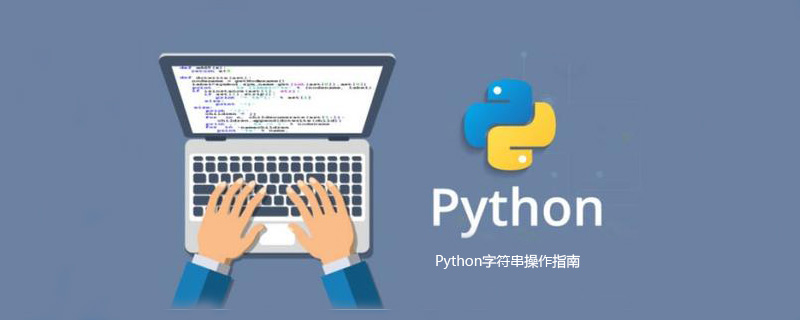Python字符串操作指南
爱喝马黛茶的安东尼
2019-12-02 17:51:233096浏览 · 0收藏 · 0评论

字符串的定义
日常编码中,大家会发现,太多时候我们需要对数据进行处理,而这数据不管是数组、列表、字典,最终都逃不开字符串的处理。
所以今天要来跟大家发散的聊聊字符串!
估计很多人看到是将字符串肯定觉得索然无味(老子都会),可大佬们不妨再往下看看?
python定义字符、字符串没有java那样的严格,不管是单引号、双引号、甚至是三个单引号和双引号都可以用来定义字符(串),只要成对出现即可。比如:
# 单个字符 a='a' # 使用单引号定义字符串 name='Uranus' # 使用双引号定义字符串 code = "Hello World ..." # 既然说到了string,怎么能不点开源码看看呢? class str(object): """ str(object='') -> str str(bytes_or_buffer[, encoding[, errors]]) -> str Create a new string object from the given object. If encoding or errors is specified, then the object must expose a data buffer that will be decoded using the given encoding and error handler. Otherwise, returns the result of object.__str__() (if defined) or repr(object). encoding defaults to sys.getdefaultencoding(). errors defaults to 'strict'. """
虽然这些不是主要说的,但还是简单提下,三个单引号或者双引号,主要是用来作为文档注释的,请不要拿来定义字符串(虽然这样并不会出现语法错误)。
今天主要说下关于打段的字符串应该如何定义,PEP8有规定,一行代码的长度请勿超过120个字符。那么如果遇到这种情况,该怎么办?
# 不推荐的使用方式:
line = """
Create a new string object from the given object.
If encoding or errors is specified,
then the object must expose a data buffer that will be
decoded using the given encoding and error handler.
"""
# 或者这样
line = "Create a new string object from the given object. " \
"If encoding or errors is specified," \
"then the object must expose a data buffer that will be" \
" decoded using the given encoding and error handler."
# 更好的实现方式:
line = ("Create a new string object from the given object."
"If encoding or errors is specified,"
"then the object must expose a data buffer that will be "
"decoded using the given encoding and error handler."
)字符串中简单的.is()与.()的用法
.is()*, 既然是is,那么它返回的结果只有两种,True or False
先来对比一下数字:
isdigit()
True: Unicode数字,byte数字(单字节),全角数字(双字节),罗马数字
False: 汉字数字
Error: 无
isdecimal()
True: Unicode数字,全角数字(双字节)
False: 罗马数字,汉字数字
Error: byte数字(单字节)
isnumeric()
True: Unicode数字,全角数字(双字节),罗马数字,汉字数字
False: 无
Error: byte数字(单字节)
总结几个偏门知识点:
a='①②③④⑤' isdigit()、isnumeric() 为True isdecimal()为False b='一壹' isnumeric()会认为是True的哦!
再来看一个等式:
isalnum() = isdigit() + isalpha() + isspace()
isdigit()表示字符串内全部为数字
isalpha()表示字符串内全部为字符
isspace()表示字符串有一个或多个空格组成
isalnum()表示字符串内全部为数字和字符
a='12345' b='①②③④⑤' c='abc123' print(a.isdigit()) # True print(b.isalpha()) # True print(c.isalnum()) # True
针对字符串大小写的方法:
.isupper() 字符串全部由大写组成
.islower() 字符串全部由小写组成
.istitle() 字符串形式为驼峰命名,eg:"Hello World"
以上这些用法去掉is,则变为了对应的字符串转发方法。学一套会两套,买一送一....
最后说一个不带.的is* --- isinstance(obj,type)
判断一个object是什么类型...
type可选类型为:int,float,bool,complex,str,bytes,unicode,list,dict,set,tuple
并且type可以为一个原组:isinstance(obj, (str, int))
判断字符串中的内容
.*with() starts ends 不仅支持开头结尾的匹配,还支持start和end两个参数来动态定义字符串的index位置
long_string = "To live is to learn,to learn is to better live"
long_string.startswith('To')
long_string.startswith('li', 3, 5)
long_string.endswith('live')
long_string.endswith('live', 0, 7)同样支持start、end来判断字符串的还有 .find()、.rfind()和 .index()、.rindex()
这两类字符串寻址方法均支持从左到右、从右至左两种寻址方式,不同的是:
find在未找到时,返回-1,而index在未找到时,会抛出ValueError的异常...
long_string.index('live') # 3
long_string.rindex('live') # 42字符串的内容变更
狭义来说使用,字符串的替换使用.replace()即可,那为什么还要单独说呢?因为它有一个可选你参数count
long_string = "To live is to learn,to learn is to better live"
long_string.count('live') # 2
long_string.replace('live','Live',1)
output:
'To Live is to learn,to learn is to better live'
# 可以看到,第二个live并未进行替换刚才说了狭义,那么广义呢?
(l/r)strip()
将字符串左、右、两端的特定字符过滤掉,默认为空格...
strip()要注意的地方是,strip('TolLive') 中的字符并非完整匹配,而是针对每一个字符进行匹配,说起来混,直接上例子:
long_string = "To live is to learn,to learn is to better live"
long_string.strip('TolLive')
's to learn,to learn is to better'字符串切片
字符串的切片分为long_string[start:end;step] start、end区间为左闭右开...这个网上说的太多了,再拉出来详细讲就要挨打了...
(l/r)just(width,[fillchar])、center(width, [fillchar])、zfill(width)
这些均为填充固定长度的字符,默认使用空格(zfill为左补0,z是zero的意思...),看意思就明白了,不用多讲了....
字符串格式化输出
本来fill和center等可以放在这里,但是他们使用频率和重量级不够格,就丢在上面了。
Python格式化输出分为两类,那是在pyton2的时代,即 % 和 format。这两种网上的资料太多了,说的太多显得没逼格...
但,还是要简单说说其中特殊的地方
% 格式化输出:
如何在%的格式输出中,输出用来看做标记为的%符号呢? 使用两个百分号(%%)
%(-)(width) width为设置长度,默认左填充空格,添加-号为右填充
.width代表字符串截断,保留多少长度的字符串
type %s字符串 %d十进制整数 %f小数 ...
多个参数是,后面的参数需要使用括号包裹起来
'姓名:%-5s 年龄:%4d 爱好: %.8s' % ('王大锤',30,'python、Java')
output:
'姓名:王大锤 年龄: 30 爱好: python、J'format格式输出:
format在python3开始官方就表示为替换%的输出方式,之所以还保留着%,主要是为了兼容性考虑...
对比%,format使用花括号{}表示变量
< > ^ 代表了format的对齐方式
'{:-^40s}'.format('华丽的分割线')
output:
'-----------------华丽的分割线-----------------'f-string
Python3.6的版本更新时,新增了f-string,英文好的可以去看官方解释PEP 498 -- Literal String Interpolation 。
f-string是字符串引号前以f/F开头,并使用{}标注替换位置的使用形式。
之所以官方推出f-string,主要是因为它的更高的性能、更强的功能。例子走起:
name = 'Uranus'
f'Hello,{name}'
f'Hello,{name.lower()}'
f'Hello,{name:^10s}'
f'Hello,{(lambda x: x*2) (name)}'
output:
'Hello,Uranus'
'Hello,uranus'
'Hello, Uranus '
'Hello,UranusUranus'python学习网,免费的在线学习python平台,欢迎关注!
本文转自:https://www.jianshu.com/p/8b2c407bf8c9

关注公众号,随时随地在线学习